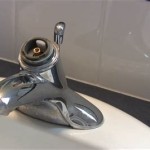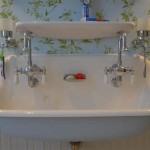How to Remove Stains from Your Bathroom
Bathrooms, with their constant exposure to moisture and various products, are susceptible to a wide array of stains. From hard water deposits to mildew and soap scum, these blemishes can detract from the aesthetic appeal of your bathroom and, in some cases, pose health risks. However, with the right knowledge and techniques, you can effectively remove these stains and restore your bathroom to its former glory.
Understanding the Types of Bathroom Stains
Before tackling any stain, it is crucial to understand its nature. Different stains require different cleaning approaches. Here are some common bathroom stains and their causes:
- Hard Water Deposits: These white or yellowish stains form when water containing high mineral content evaporates, leaving behind calcium, magnesium, and other minerals. They are frequently found on showerheads, faucets, tiles, and tubs.
- Soap Scum: This greasy, filmy residue is a result of soap residue and dirt accumulating on surfaces. It often appears as a hazy film, especially on shower walls, tubs, and sinks.
- Mildew: This black or greenish mold thrives in damp, dark environments and commonly appears in grout lines, shower curtains, and areas with poor ventilation.
- Rust: Iron in water can cause rusty stains, particularly on metal fixtures, sinks, and toilets.
- Urine Stains: These are caused by urine residues and can be difficult to remove, particularly on toilets and bathroom floors.
Effective Stain Removal Strategies
Once you have identified the type of stain, you can choose the appropriate cleaning method. Here are some tried-and-true strategies for removing common bathroom stains:
Hard Water Deposits
For hard water deposits, a simple solution of white vinegar and water can often do the trick. Mix equal parts of vinegar and water in a spray bottle, apply it to the affected area, and let it sit for 15-20 minutes. Then, scrub the surface with a soft-bristled brush and rinse with clean water. For stubborn stains, you can also use a commercial hard water remover.
Soap Scum
Baking soda is an effective and natural way to combat soap scum. Sprinkle baking soda on the affected area, add a little water to form a paste, and scrub with a non-abrasive brush. Alternatively, you can use a commercial soap scum remover, ensuring it is safe for your bathroom surfaces.
Mildew
Bleach is a potent mildew killer, but it should be used with caution. Always ventilate the room well before using bleach and follow the instructions on the product label. Apply the bleach directly to the mildew, let it sit for 10-15 minutes, and then rinse thoroughly with clean water. For stubborn mildew, you can also use a mildew-removal spray.
Rust
Removing rust requires a bit more effort. Commercial rust removers are available, but you can also try using a paste of lemon juice and salt. Apply the paste to the rust stain, let it sit for 30 minutes, and then scrub with a soft-bristled brush. Rinse the area thoroughly with water.
Urine Stains
For urine stains, a mixture of baking soda and hydrogen peroxide can be highly effective. Combine equal parts of baking soda and hydrogen peroxide to form a paste. Apply the paste to the stain, let it sit for 30 minutes, and then scrub with a brush. Rinse the area thoroughly with clear water.
Preventive Maintenance
Preventing stains in the first place is always the best approach. Here are some preventive measures you can take:
- Regular Cleaning: Wipe down bathroom surfaces with a damp cloth after each use to prevent the buildup of soap scum, mildew, and other residues.
- Proper Ventilation: Ensure adequate ventilation in your bathroom by using a fan during and after showering. This helps to dissipate moisture and reduce the growth of mildew.
- Water Softener: Consider installing a water softener to reduce the mineral content in your water, minimizing the formation of hard water deposits.
- Use of Cleaners: Regularly use a bathroom cleaner designed for removing soap scum and mildew.
By following these tips, you can effectively remove stains from your bathroom and maintain a clean and hygienic environment. Remember to always test cleaning products on a small, inconspicuous area before applying them to the entire surface.

4 Ways To Remove Gross Brown Toilet Stains

3 Best Ways To Get Rid Of Hard Water Stains From Bathroom Tiles Kent

How To Remove Stains From Bathroom Tiles

How To Remove Hard Water Stains From Toilet Bowl In 3 Minutes Cleaning S Andrea Jean

How To Clean A Very Stained Toilet Bowl

How To Remove Hard Water Stains From The Toilet Castle Keepers
How To Clean Mineral Stains From Your Toilet Howstuffworks

How To Remove Hard Water Stains From Toilet Bowl

How To Remove Stains From A Porcelain Sink Isavea2z Com

Removing Toilet Limescale With Just Two Ingredients Poppies Cleaning Service
Related Posts







